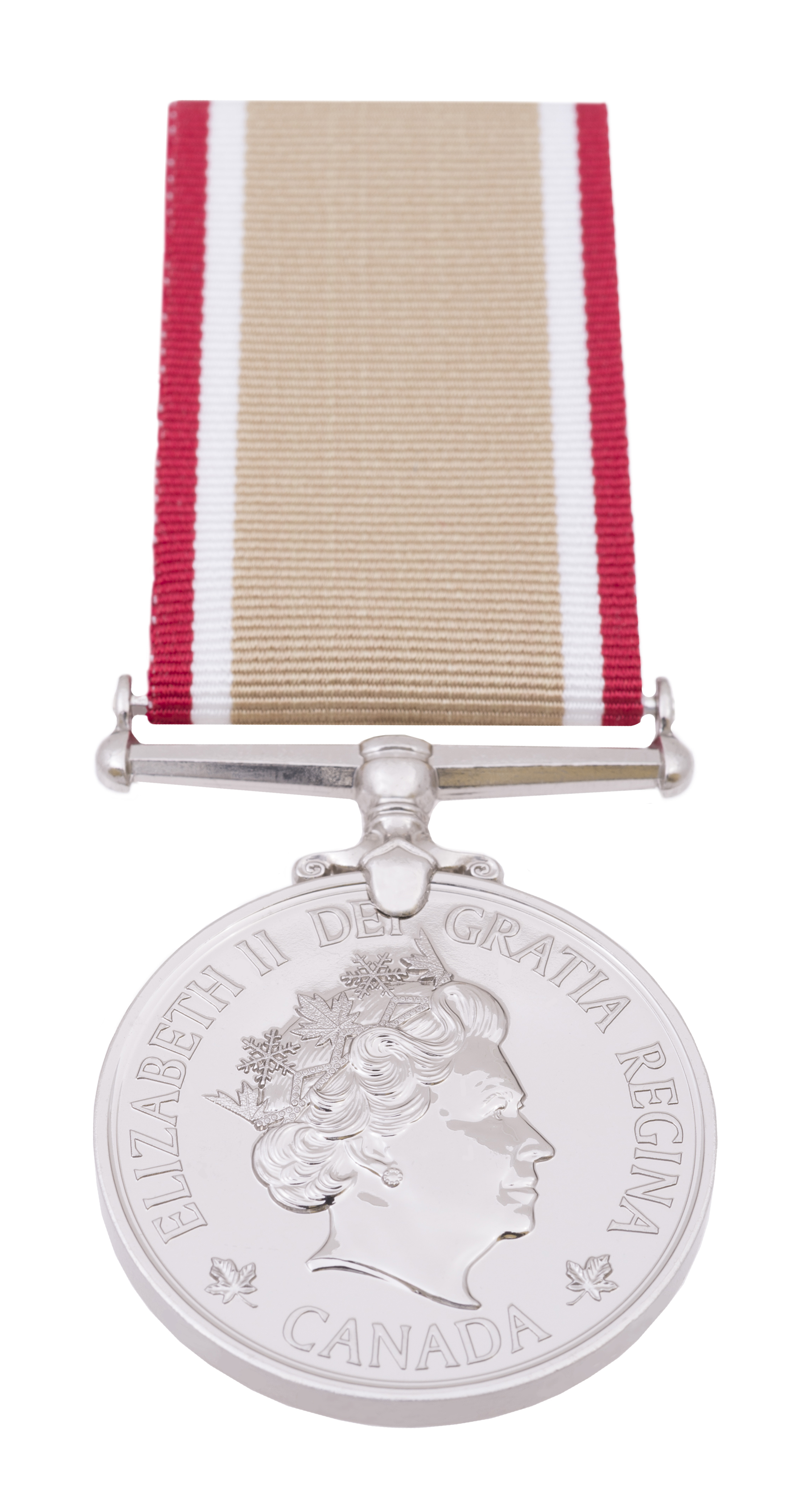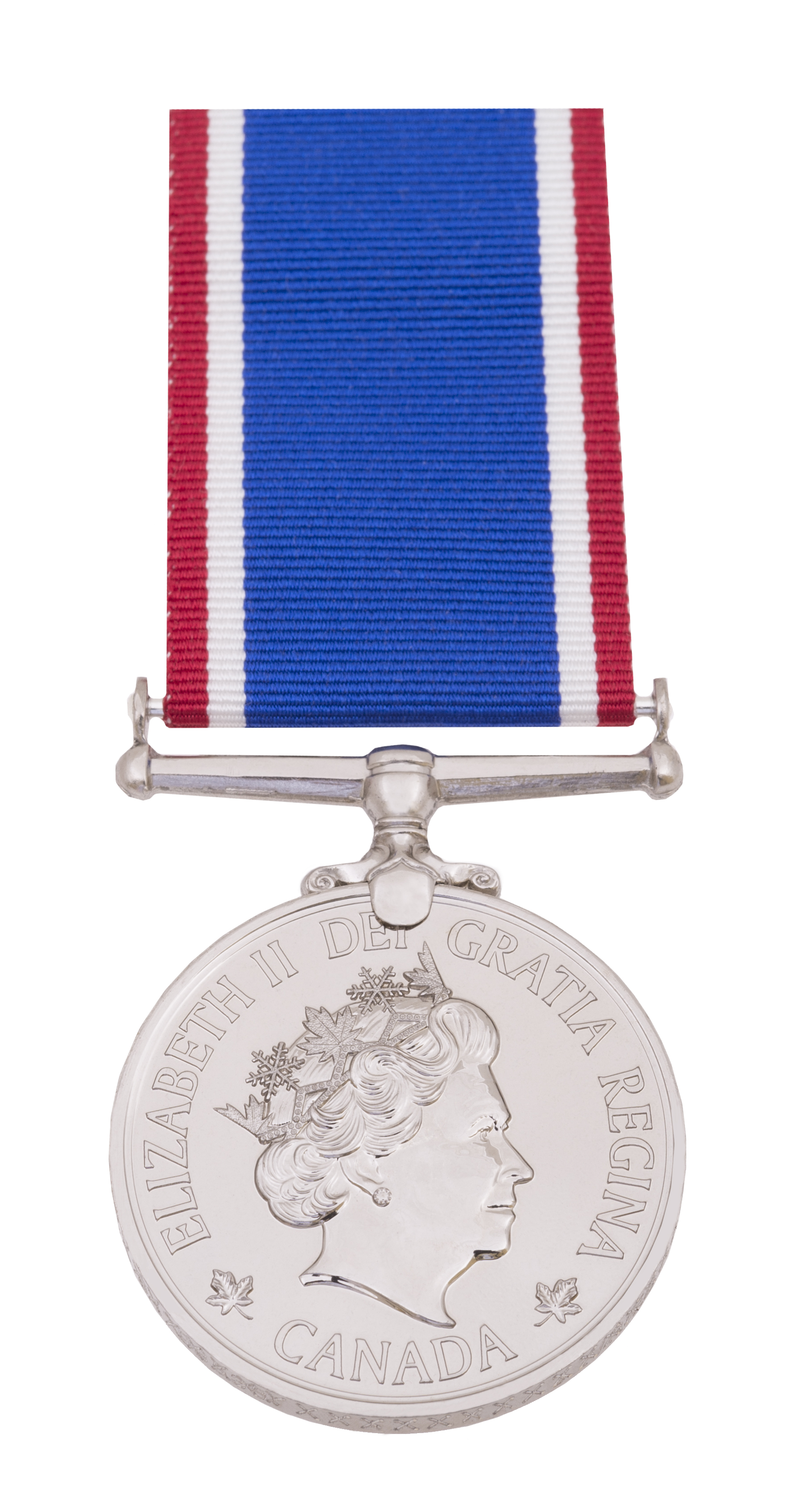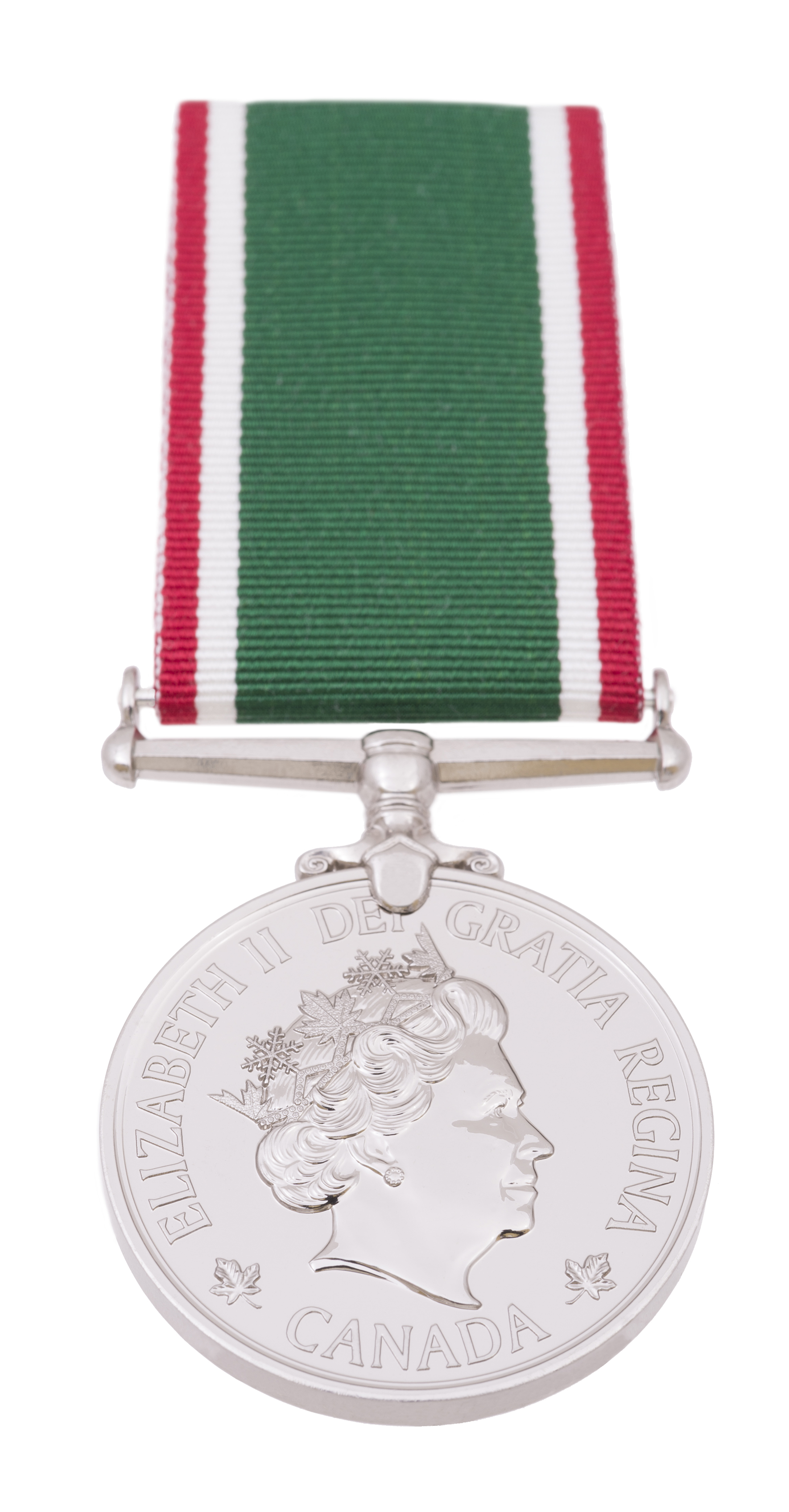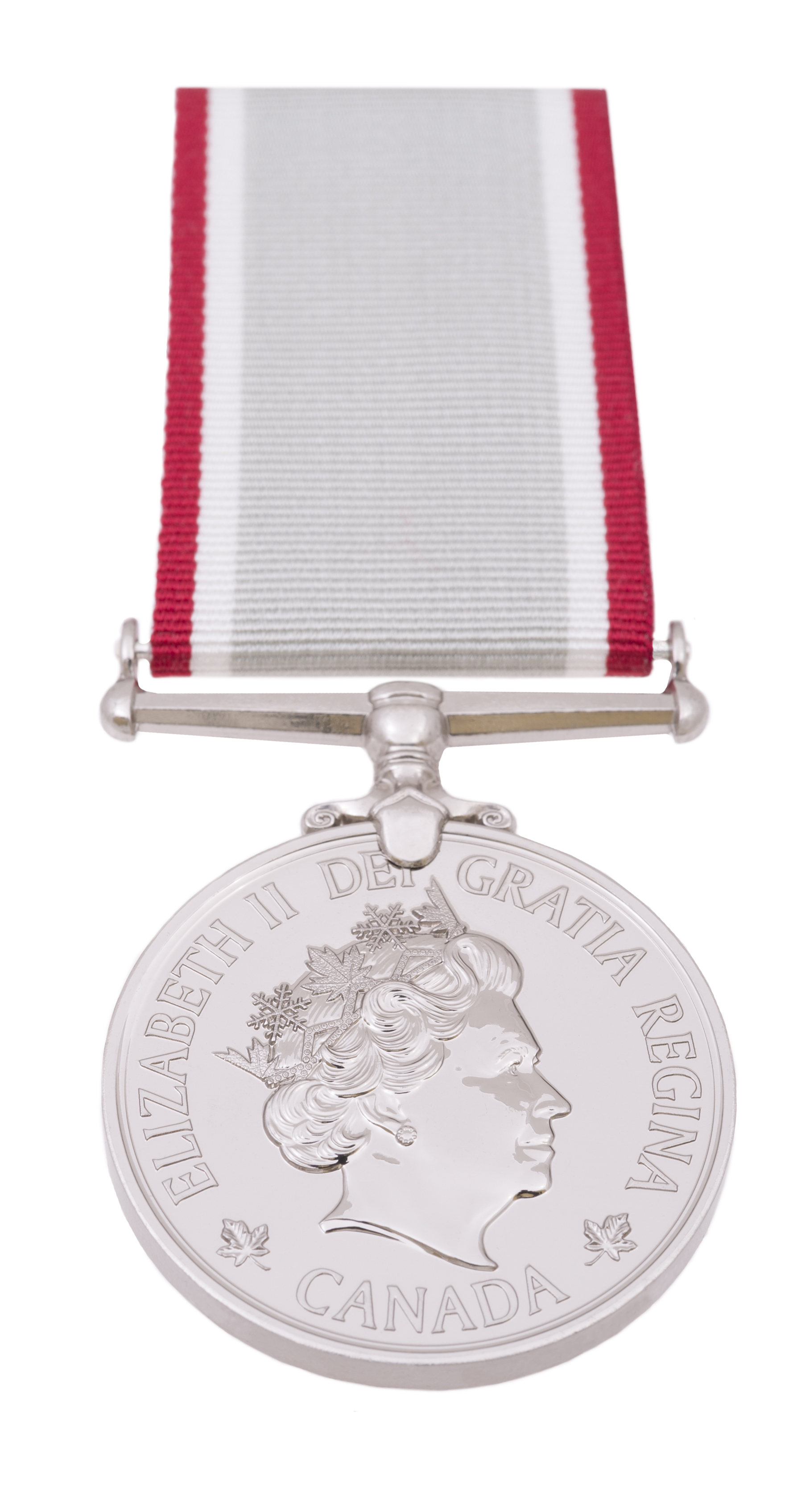The Operational Service Medal was created on July 5, 2010 as a means to recognize those who serve in or provide support to overseas operations other than those conducted in the presence of an armed enemy.
The Medal will be awarded to Canadian military personnel, civilians under the authority of the Canadian Armed Forces, members of allied forces integrated within the Canadian Armed Forces, as well as to Canadian police officers who have taken part in important missions overseas. Rather than creating a new honour for each new Canadian Armed Forces operation as it arises, the Medal - with its theatre or task specific ribbons - can be awarded to honour participation in any operation that meets the eligibility criteria.
The Medal may also be awarded to civilians who have served in a theatre of operations outside Canada under dangerous circumstances, at the initiative, by the nomination or with the agreement of the Government of Canada.
For more information on the eligibility criteria, please visit the Directorate of Honours and Recognition section of the Department of National Defence website.
Description of the medal
The Medal, which is silver in colour, consists of a circular medallion that is 36 mm across, with a straight suspension bar.
On the obverse of the Medal appears a contemporary effigy of Her Majesty The Queen of Canada with the inscriptions “Elizabeth II Dei Gratia Regina” and “CANADA”, separated by small maple leaves.
On the reverse of the Medal appears from top to bottom the Royal Crown, on either side of which are three maple leaves joined on one stem, a representation of the globe and crossed branches of laurel and oak leaves.
The Medal shall be worn following the General Service Medal in the order of precedence in the Canadian Honours System.

|

|

|

|

|

|
- Letters patent creating the Operational Service Medal - Canada Gazette, September 25, 2010, pp. 2521-2525
- Letters patent amending the Operational Service Medal Regulations - Canada Gazette, February 11, 2012, pp. 219-221
